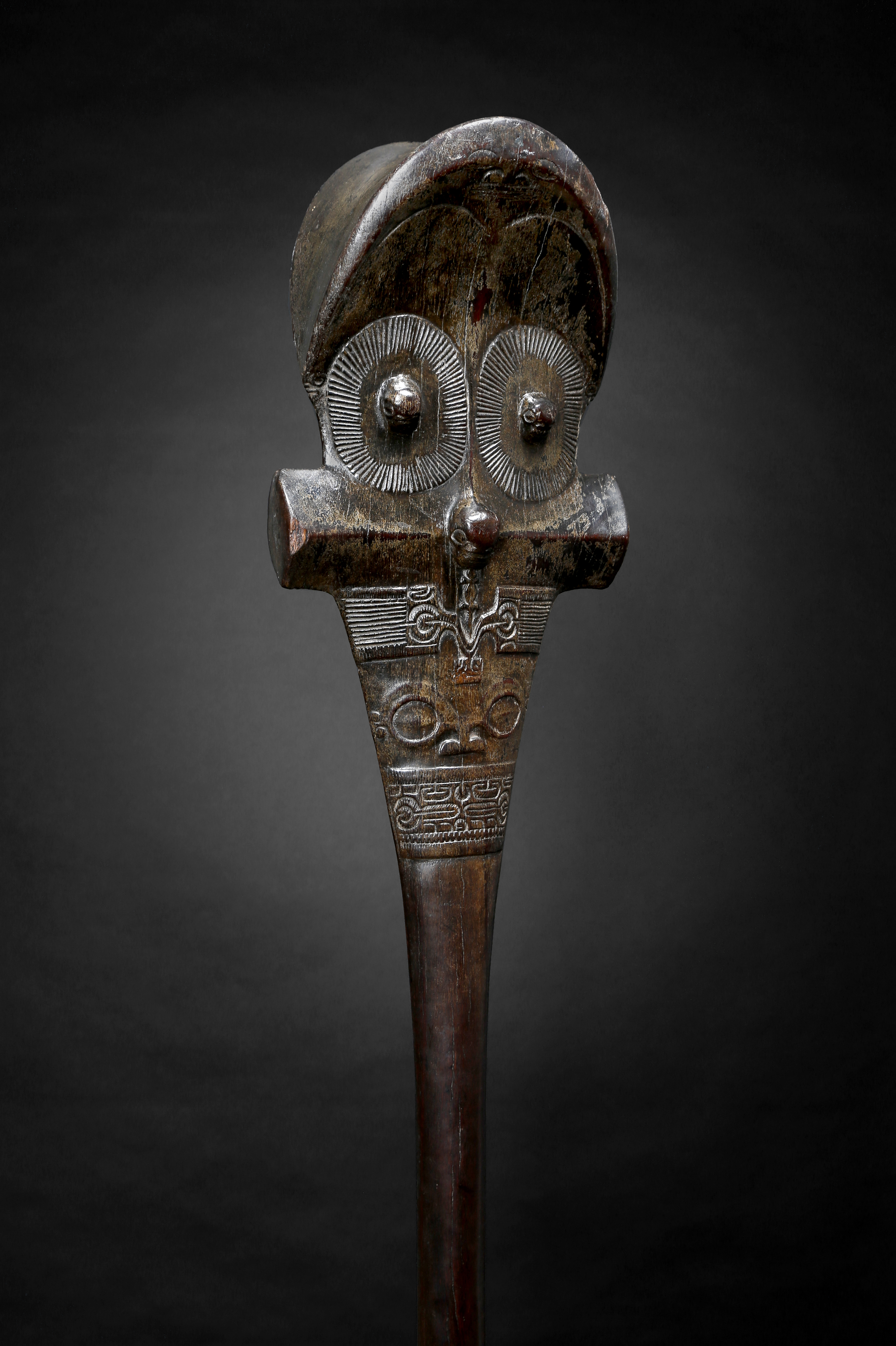Day 1 - Tribal Art the Americas, Indonesia & Oceania - 18th September 2019
Lot 1461
A Marquesas Island U'u war club Polynesia with relief carved tiki heads
Estimate £10,000 - £20,000 | Hammer £71000
+ Buyers Premium
Description

A Marquesas Island U'u war club
Polynesia
with relief carved tiki heads, eyes, faces, geometric motifs and a lizard below one of the central tiki heads, the cylindrical shaft with remains of sennit binding and a phallic terminal, pierced and with the remains of inserted fibre, early 19th century,
145.5cm long.
Provenance
Elijah Armitage (1781 - 1863) Member of the London Missionary Society who was in Tahiti from 1821 - 1836, with the intent on teaching the islanders the spinning and weaving of cotton. Thence by descent.
Made of ironwood casuarina equisetifolia and known as toa by Marquesans, a very dense, hard wood, the u'u' clubs were placed in the mud of taro fields and then polished with coconut oil to obtain the rich dark patina. Bound with sennit around the base of the handle and with human hair or feathers. The hair usually being that of relatives.
The curved crutch like top was so that the owner could put it under his arm and lean on it. The owner would have been a high ranking and important person in Marquesan society, a leader in warfare, also known as toa. Above these warriors in Marquesan society would have only been chiefs and priests.
The carving of these u'u' clubs resulted in a traditional form throughout the late 18th and through the 1840's, but no two have the exact same decoration, making each an incredible personal symbol of owners' relationship with his ancestors. Paul Gaugin wrote of Marquesan art 'always the same thing but never the same thing' and the clubs are certainly true of this observation.
The head of the club has two sides, with concave and curved planes with relief carving. The main image represents a large human face, made up from the two tiki heads within striated circles as the eyes and brows above, and another tiki head below the eyes as the nose.
Below this stylised head are three distinct rows, two of stylised geometric motifs and a pair of eyes, differing on each side. This club has on the top row a lizard carved under the 'nose' tiki head. Lizards are rarely seen on these clubs but have been suggested they may indicate the owner. The other side has two arm-like lines running from the circles within the panels to the mouth of the 'nose' tiki. Either side of the main 'eyes' to the edges are two more faces and another on the top edge. There are at least sixteen faces on this club, which are thought to draw on the sacred powers of the ancestors, giving the owner protection in warfare. With all these stylised faces the warrior owner of this club had 'eyes' looking in four directions.